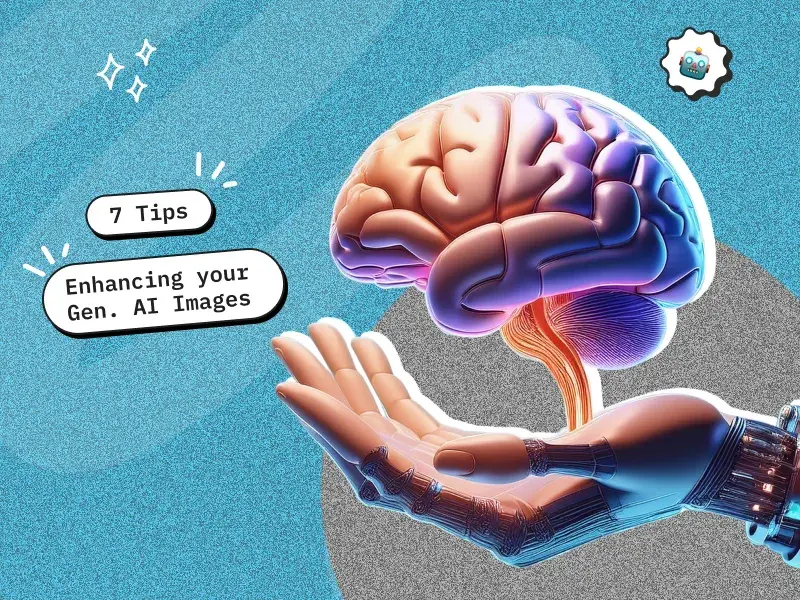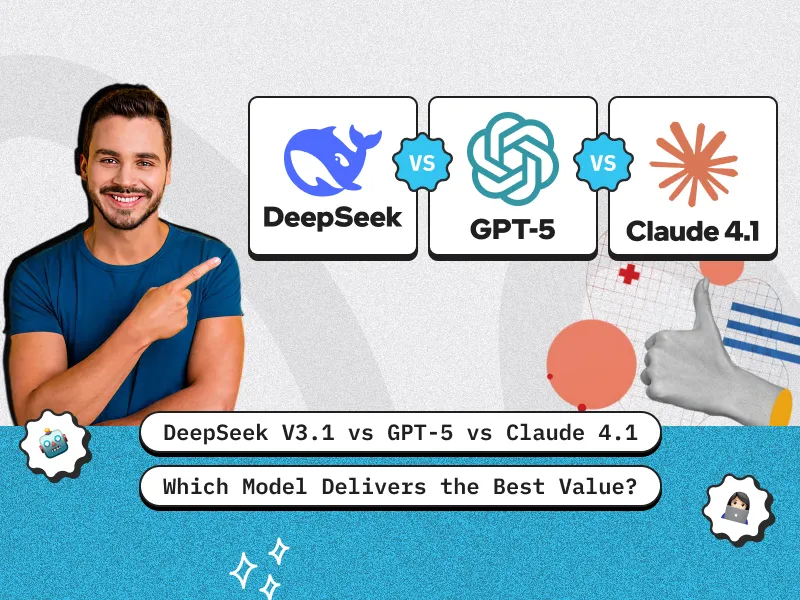Quick Summary:
To ensure high-quality generative AI images, select the right AI model, use diverse and relevant datasets, apply data augmentation, and implement regularization techniques. Testing models across various scenarios and staying updated with the latest advancements are key strategies for optimizing image generation, while understanding AI limitations ensures reliable outputs.
Introduction
Leveraging advanced techniques such as Generative Adversarial Networks (GANs) and Variational Autoencoders (VAEs), these AI models learn from vast datasets to generate new visuals that mimic human creativity. However, achieving high-quality generative AI images requires more than just sophisticated algorithms — it demands strategic planning and meticulous execution. This blog explores eight essential strategies to ensure your generative AI images meet and exceed quality expectations, enabling you to harness the full potential of AI-driven creativity.
For those looking to achieve top-notch results, partnering with a Generative AI development company can be invaluable.
How are Generative AI images created?
Generative AI creates images by training models on large datasets to learn patterns and features. Techniques like Generative Adversarial Networks (GANs) and Variational Autoencoders (VAEs) are commonly used. GANs involve two neural networks—the generator, which creates images, and the discriminator, which evaluates them. VAEs encode and decode images from a compressed latent space. After training, these models generate new images by sampling from learned distributions.
Understanding Generative AI is important to know how Generative AI works and its applications across various industries
AI image market
The global AI image generator market size was estimated at USD 349.6 million in 2023 and is expected to grow at a CAGR of 17.7% from 2024 to 2030. The rapid advancements in deep learning and AI algorithms have significantly enhanced the capabilities of AI image generators. Innovations in neural network architectures, like generative adversarial networks (GANs), have led to the generation of high-quality and realistic images. As these algorithms continue to evolve, the potential applications for AI image generation will expand even further, propelling the market forward.
Everypixel estimates that nearly 15.5 billion AI-generated images were created by August 2023, with a staggering 34 million new images generated daily. OpenAI’s report from the same period indicates a user base exceeding 3 million for DALL-E and ChatGPT, collaboratively generating over 4 million images daily.
Strategies to enhance Generative AI images
Generative AI has revolutionized the way we create and manipulate images. However, to get the best results, there are several strategies you can employ. Here are 8 tips to enhance the quality of your generative AI images:
1. Select the Right Generative AI Model
The foundation of high-quality generative AI images starts with choosing the right model. Different models are tailored for specific tasks, so it’s crucial to select one that aligns with your needs.
Explore Popular Generative AI tools for art and design
- DALL-E: Known for its intricate and imaginative outputs.
- Midjourney: Ideal for artistic and surreal designs.
- Freepik AI Image Generator: Great for creating high-quality visuals quickly, especially for marketing, social media, and design projects.
- Stable Diffusion: Excellent for producing consistent and realistic images.
With many Generative AI models available, ranging from DALL-E to Stable Diffusion,including user-friendly options like Freepik AI Image Generator, selecting one that complements your style and requirements is paramount.
2. Choosing the Right Dataset
A model is only as good as the data it learns from. Ensure you’re using a high-quality, diverse dataset that is relevant to your desired output. The dataset should be large enough to cover various aspects of the subject matter, helping the AI understand and generate accurate and detailed images. Additionally, consider curating and cleaning the dataset to remove any low-quality or irrelevant data.
3. Implementing Data Augmentation Techniques
Data augmentation is a powerful technique to improve the performance and robustness of generative AI models. By artificially expanding your dataset with variations, such as rotations, flips, and color changes, you can help the model generalize better. This results in more accurate and diverse image generation, reducing the risk of overfitting to a specific dataset.
4. Regularizing the Training Process
Regularization techniques help prevent overfitting and improve the generalization of your AI model. Techniques such as dropout, weight decay, and batch normalization can be employed during training to ensure the model does not become too specialized for the training data. This leads to more versatile and higher-quality image generation.
5. Test the Model on Different Scenarios
To ensure the generative AI model performs well across various scenarios, it’s important to test it thoroughly. Evaluate the model’s output in different contexts and under different conditions. This helps identify any weaknesses or biases in the model, allowing you to make necessary adjustments and improve the overall quality of the images.
6. Keep Learning and Improving
The field of generative AI is continuously evolving, with new models, techniques, and best practices emerging regularly. Stay updated with the latest research and advancements in the field. Participate in AI communities, attend conferences, and read relevant literature to keep your skills sharp and your generative AI models at the cutting edge.
Generative AI Use Cases: Explores various applications of generative AI beyond image creation, showcasing its transformative potential in various industries.
7. Understand the Limitations of AI
Despite the incredible capabilities of generative AI, it’s important to understand its limitations. AI models can sometimes produce unexpected or inaccurate results, especially in complex or ambiguous scenarios. Recognize the boundaries of your AI system and set realistic expectations. Knowing when to rely on human expertise for final quality checks can make a significant difference in ensuring the best outcomes.
Further insights on effectively implementing generative AI within your organization, explore actionable tips for implementing Gen AI that can guide you through the process.
Read more: Top 5 Challenges in Using Generative AI and ChatGPT in Your Business in 2024
Conclusion
By carefully selecting the right AI model, curating datasets, employing advanced techniques like data augmentation and regularization, and continuously refining your approach, you can elevate your visual content to new heights. Remember, while AI offers unprecedented capabilities, understanding its limitations and integrating human expertise where needed ensures that your outputs consistently align with your creative vision and business objectives.
For further support in navigating the complexities of Generative AI and to explore tailored solutions, consider partnering with a reputable Generative AI development company.











 30 mins free Consulting
30 mins free Consulting 
 11 min read
11 min read 







 Love we get from the world
Love we get from the world 